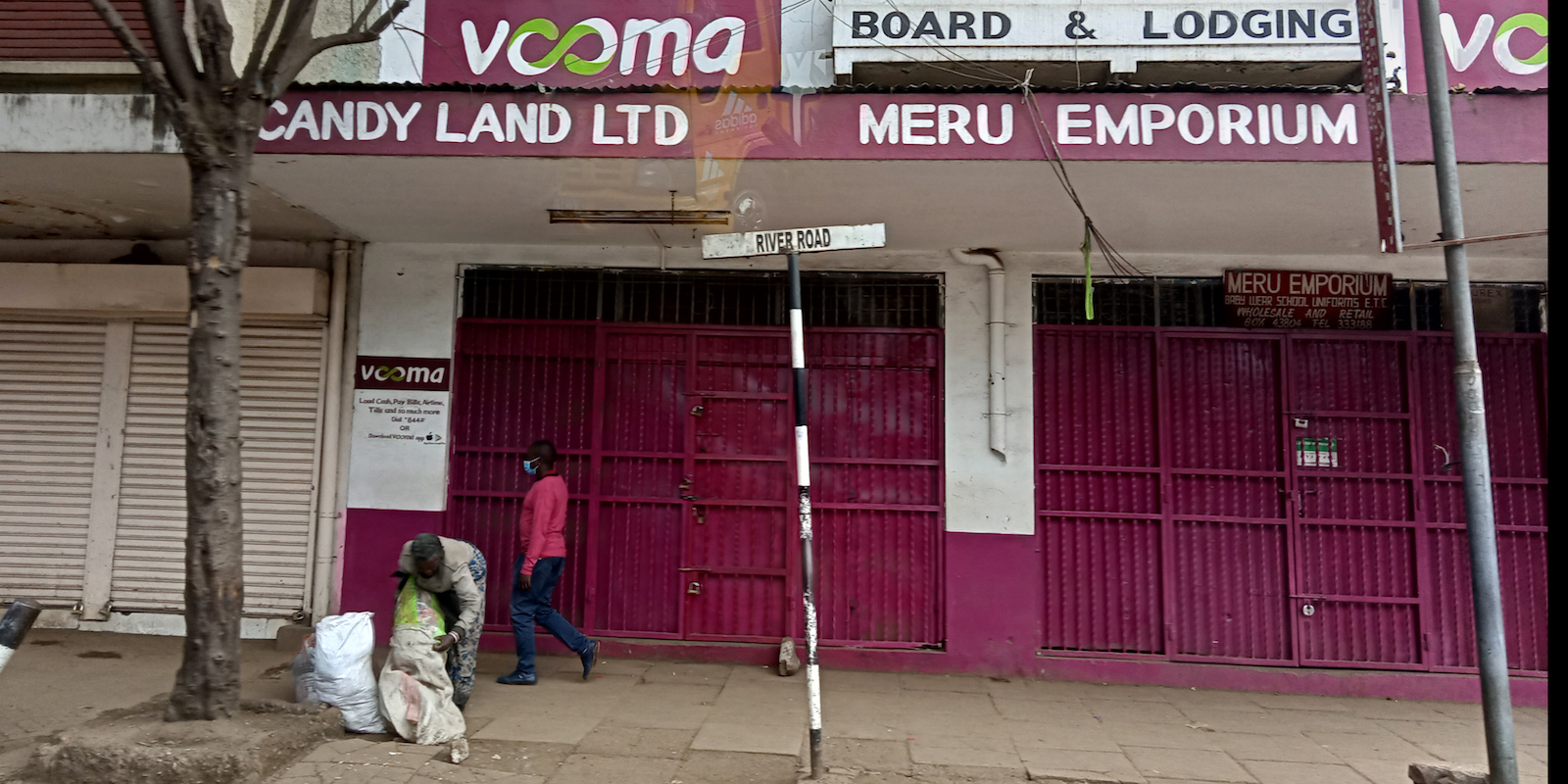
liner notes: towards a possibility
by Kamwangi Njue
“to the harmonization of different temporalities (then) can history frame time’s myriad events within a common projectual narrative structure.”
– Franco “Bifo” Berardi, Breathing, Chaos and Poetry
“the narrative of Nairobi follows a schema: rinderpest outbreak and ecological calamities that adversely affect the pre-capitalist economy and society; a railway construction; a relatively flat swampy land with cool water and some arable land; a series of annexations, expulsions and expansions; and finally, a city hurtling towards “world-class city” status…”
– bethuel muthee, The Hands That Refused The City
1.
mask hamsini mask hamsini
(SON000300.wav – 3:03 min)
In the beginning, the German government was supposed to provide Kenyan health workers with masks. The shipment of 6 million face masks got lost at a Kenyan airport.
Masks. Either tailor-made with a Kenyan fabric, Adidas bootlegs, Ochungulo Family designs and ones printed with ‘Keep Distance’ – vendors shouting “hamsini, hamsini” is an urgent tune in the streets.
wamekuja wote wanaimba – mpaka maaskari
(SON000300.wav – 4:26 min)
The President imposed a curfew on the twenty-seventh of March. Ten days later, at least 6 people were reported dead. By the fifth of June, the number of police murders was at 26. All from poor neighbourhoods. IPOA reports 87 complaints of police violence have been lodged since the curfew, including shootings, robbery and sexual assault.
If they can dare sing, if they can partake in this act of sustained tonality and rhythm, they might as well have a sense of being.
(On June 4th, IPOA (The Independent Policing Oversight Authority) had reported that 6 police officers were charged. IPOA was established in 2012, “to provide for civilian oversight over the work of the police in Kenya”, and prior to June 4th 2020, it had prosecuted only seven officers.)
the birdsong
(SON000166.wav – 2:30 min)
It is morning in 1995. It is towards the end of the year. The schools are out. We have just moved here. The walls of the house are still warm and wet. A night of the first, a small length in one room of the three-bedroom house has caved. This is the side where the soil christened to be mud was loose. At the ageing kivarwa tree, ngocos wakes us to a sweet promise. It will be so since the day I might leave home. Sometime in the future, I will go for years, but once I come back, even after the tree has been cut down – to provide beams for another house, the Ngoco bird family will still be there, having migrated to a nearby tree. And my mornings will be like this, for my nephews and nieces and their mornings of the future. They will dwell in this mutual nesting, of human and birds.
At Aga Khan Walk, the city ngocos sing.
Following Michelle K. Angwenyi on BIRD—an alternative thesis, we are reminded that “birds force us to remember.” She returns to the evolution, “a coagulating point, a centre. In places both inside and apart from memory. What phenotypes tells us, what memories they hold.” She thinks of familiarity “.. how iterations of related birds have been in touch with each other.”
She follows the tenacity of crows “what is known via their restlessness,” how this in many instances, “approximates pestilence.”
In Ngugi wa Thiongo’s Black Bird, Mangara believes that the blackbird is responsible for deaths in his family.
Birds birds birds. Birds of the morning, birds of flight and ones of death.
wale wa mali safi wale wa
(SON000170.wav – 4:45 min)
At Grogan, there’s Kirinyaga Kikuyu mechanics as you enter from Ronald Ngala towards Globe Cinema roundabout, somewhere in the middle, Luo mechanics also have their own turf. These dialectical cultural gigs oversee the intricacies of the economy.
At the gate of the Miraa market, the Mbeere and Embu are definitely in the building. Even with the lockdown, khat is still a basic human need. This is bigger than the government. Muguka from Embu County touches base here. Local city distributors engage with the traders. Hii inapsread hadi huko Far East 1960, bra Kinyua 42 – Kibra, the Vaite joints spread around the city like a COVID scare— Ungwaro 46. Ati pandemic? Mogoka kama daily bread.
2.
A poem for Nyanjiru (*)
(SON000168.wav)
a-side
No folktales on March 15, 2022
sample: “kukutoa koo nayo”
Delamere Terraces
*gunshots
skip
skip
b side
the oath of the land
the land remembers
kanyegenuri
guturamira nga’nia
kanyoni kanja na mbaika ngu
3.
To partake in a listening ritual invites one to consume and get soiled or sanitised with the sound heard. This affects from the other, this essayful event throws us to a historical domain of this tangible memory, metaphor or symbolism of that was, that is.
Sound creates relationships between recordist-listener and their environment. This embodied cognizance orients the listener within a continuum of the environment and its possibilities. As Nairobi city hurtles towards a “world-class city”, a recordist may encounter effects of technology and bad economy on society or political desires as they are deconstructed and reassembled, this affords the listener with a meaning. This encountering and generating a meaning or place captures the movement of sound towards a possibility.
(*) In 1922, Mary Muthoni Nyanjiru led a group of women that stormed a police station in Nairobi, Kenya, to demand the release of the nationalist leader Harry Thuku who had been arrested and detained by the colonial government.
© 2020 SOUND OF NAIROBI
